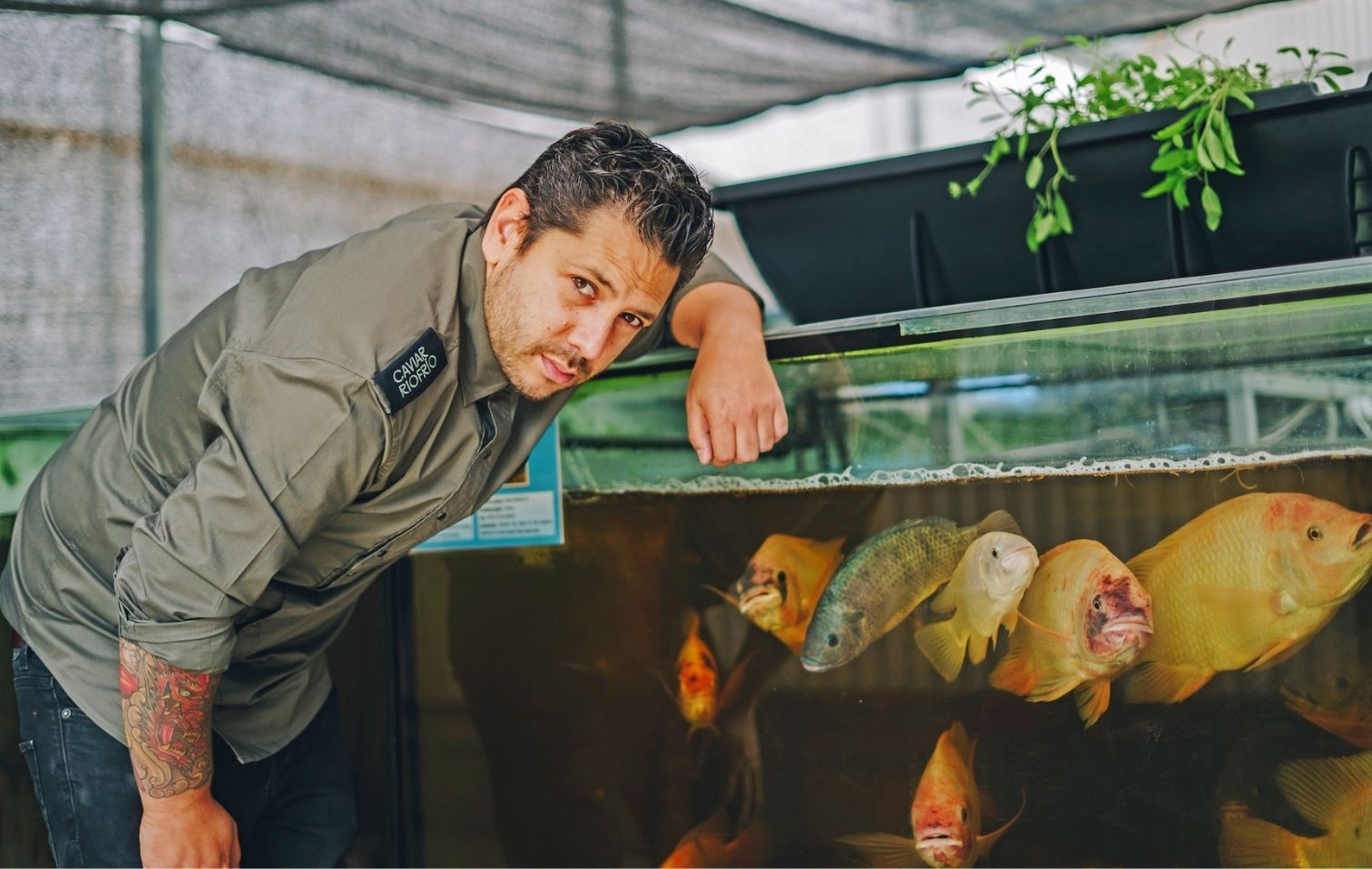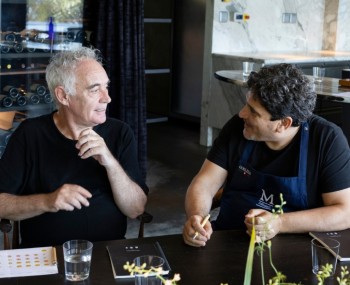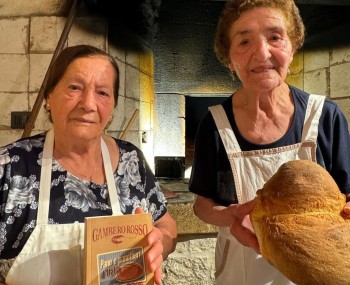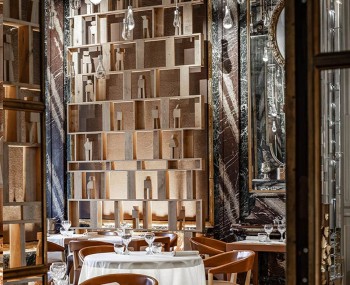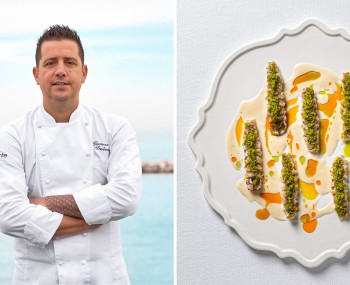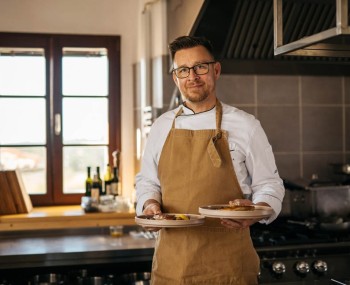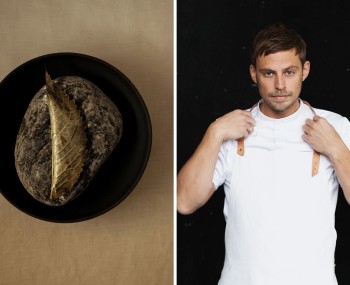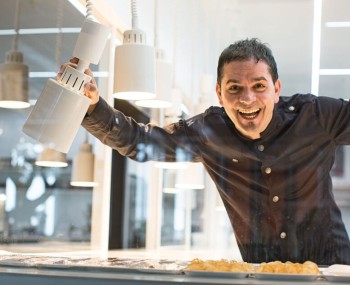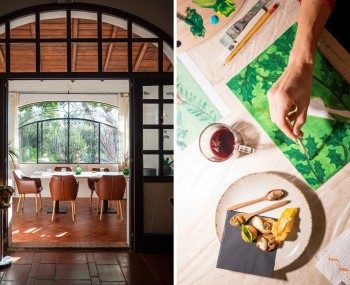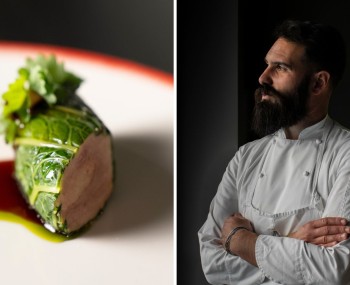Trout, sturgeon, tench, catfish, and even piranhas—yes, those river predators with their unsettling smiles—find their culinary raison d'être on Sollo's menu.
The chef
The future has shiny scales and roots in the water. It doesn't smell of the sea, but of the sweet, intense aroma of aromatic herbs, freshwater fish sauce, rich broth extracted from eel, and the crispy skin of tilapia curling up on the griddle. In a corner of the Costa del Sol, the gastronomy of tomorrow floats peacefully in the tanks of a visionary chef. His fish swim like ideas, their reflections crossing the clear air of Fuengirola: they are alive, raised with almost artisanal care, nourished by the future. And then served, transformed into experiences that speak of sustainability, taste, and research. This is not utopia, but Sollo. Diego Gallegos never needed a pen to exercise his right: he might have done so, perhaps, if cooking had not stolen his heart among the fried dishes of a bar in Benalmádena. He had a code in his hands, and he came out with a spoon. Since then, he has rewritten every rule in his own way. Today, he is at the helm of a restaurant that looks like a laboratory, a recording studio for plants, fish, and gastronomic desires. Sollo, his most intimate creation, is much more than a Michelin-starred restaurant. It is a breathing organism, an ecosystem designed to nourish and tell stories.
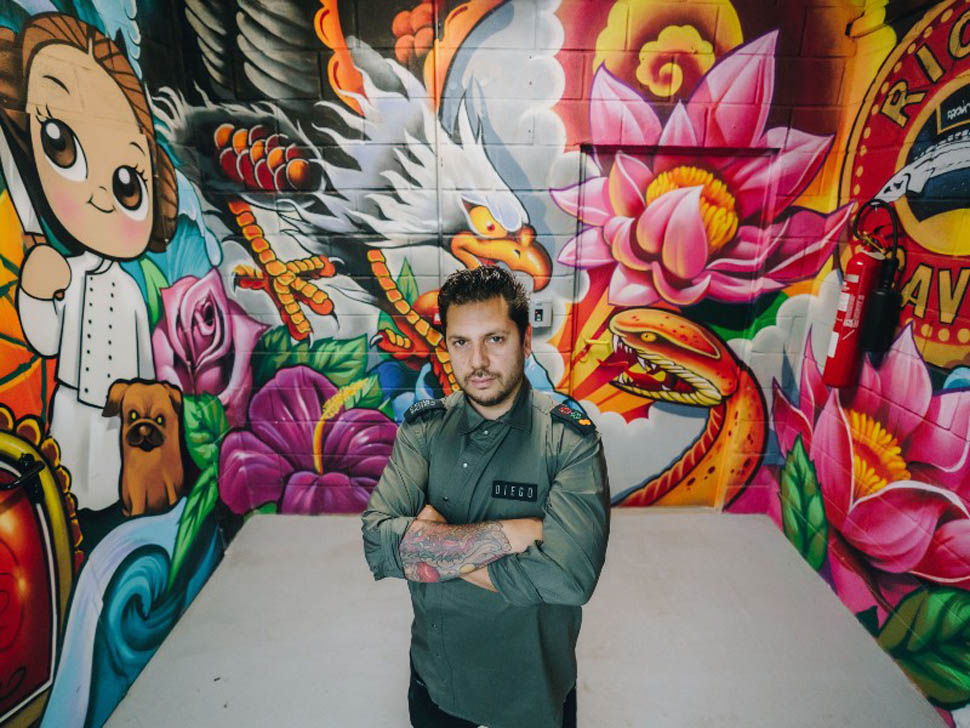
In 2021, the Michelin Guide recognized the radical innovation of this project with a green star, establishing Sollo as one of the pioneers of sustainability in the kitchen. The concept, seemingly simple, is actually an ingenious framework, as reconstructed by El País in this special feature: an aquaponics system that combines freshwater fish farming with the hydroponic cultivation of vegetables, herbs, and plants with surprising qualities. The roots sink where the fish swim. The result? A virtuous cycle in which 80% of the ingredients served on the tasting menu are produced on site. The tanks that gleam in his workspace are not aquarium decorations: they are incubators of experiences. Tilapia, trout, sturgeon, tench, catfish, and even piranhas — yes, those river predators with their disturbing smiles — find their culinary raison d'être here. Gallegos doesn't just cook them: he interprets them, deconstructs them, and makes the most of every last bone, literally. He makes broth and garum from the bones, tartare from the tails, and finger food supports from the heads. Only the entrails are excluded, while everything else returns to the earth or is reinvented in a new form.
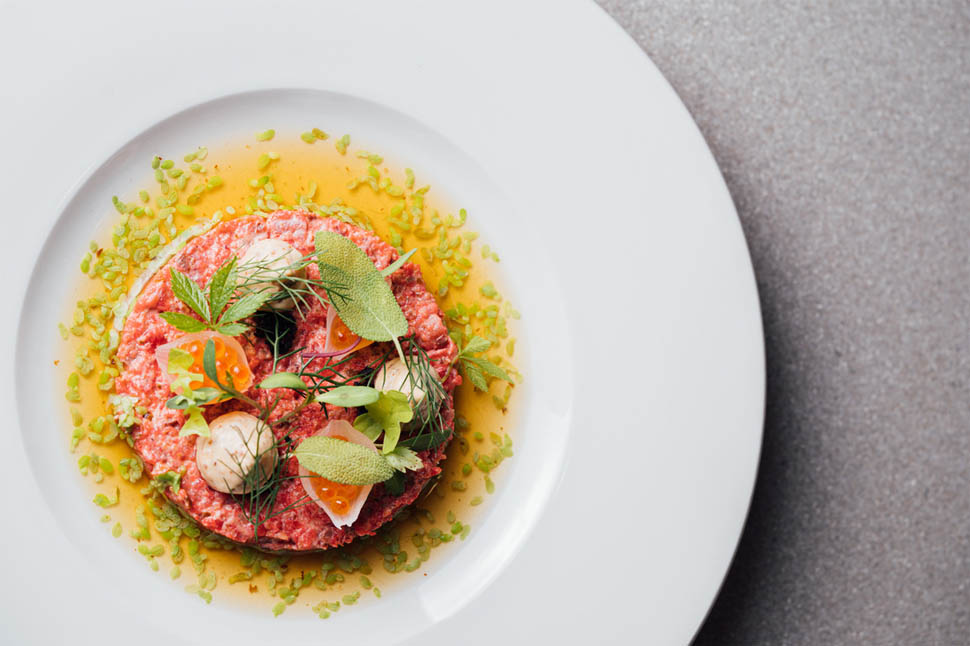
But it's not just technique. It's also the poetry of the ingredients, respect for the ecosystem, and a creative streak that never sleeps. Gallegos is a man of many talents: he plays drums in a band, cooks, plays video games, posts recipes on TikTok, and curates cocktails, menus, and wine lists at other restaurants. Yet nothing carries the same weight as Sollo. “Our fish is not culturally noble, but it is of the highest quality. At first, people expected conventional dishes, but now they come to be surprised,” says the chef, with the humility of someone who has learned to recognize excellence even where others see only stagnant water. The current menu is called Caminho 2025, costs €180, and is a three-and-a-half-hour journey. But to call it a “tasting” would be an understatement: it is a story, a sensory and conceptual immersion. It starts with a tour of the facilities, where you meet the fish and taste them directly in the kitchens. Then you move on to the dishes, which are surprising variations on a symphony of fresh water: catfish tripe, marinated trout pie, sturgeon black pudding. Once upon a time, they used to say “from nose to tail”; here it is “from fin to bone.”
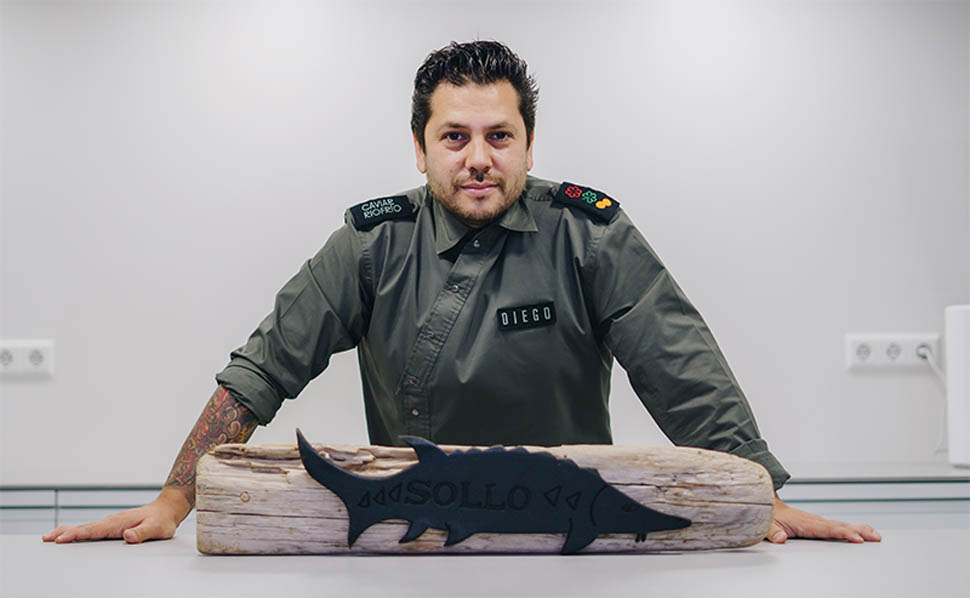
Behind every dish there is a broader concept that goes beyond the plate itself. "If we don't support artisanal farms, in the future we'll have to settle for mediocre sea bass. I want my children to be able to cook with the same quality that I have today," reflects Gallegos, firmly reiterating a principle that is now part of his identity. Sustainability is not a label, it is a responsibility. It is an invisible signature on every dish that comes out of his kitchen. His work with the Aula del Mar foundation, which began in 2016, has opened the door to endless possibilities. Today, the system has been replicated in several locations: from La Noria, owned by the Province of Malaga, where the fry are raised, to the Cajiz farm. The solar panels soon to be installed will close the circle: soon, Sollo will be energy self-sufficient. What is striking about this story, however, is not only the visionary nature of the project, but the stubborn and clear-headed passion with which it is being carried out. The impression is that Gallegos does not cook just to satisfy hunger, but to tell the story of a possible future. A future where luxury is regenerative, where waste becomes a resource, and where beauty lies in the ability to amaze without destroying.
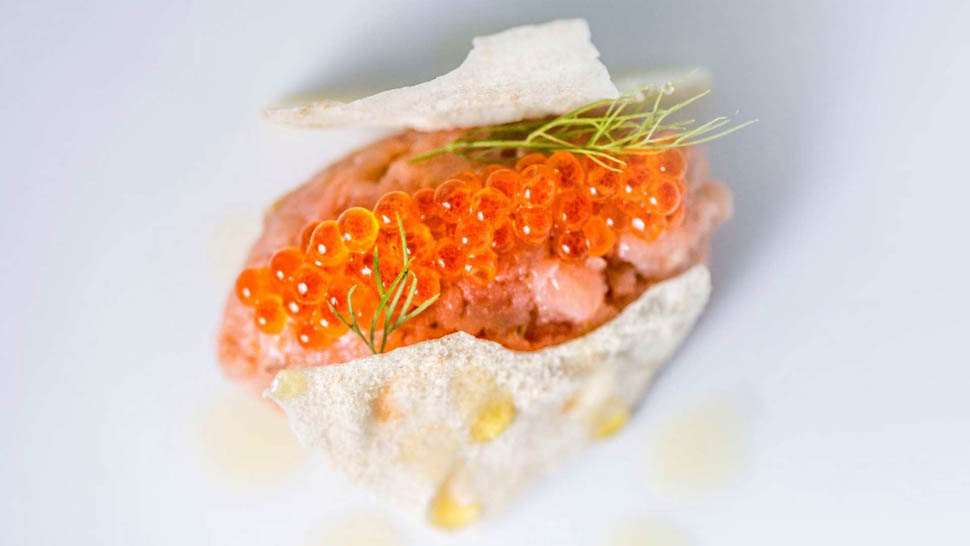
In a gastronomic world that often chases after rare ingredients or the most spectacular techniques, Gallegos swims against the tide. He rediscovers the river, falls in love with fish that nobody wants, and elevates tilapia to queen of the table. With method, study, and an almost crazy spark of creativity. His Sollo is not a happy island. It is a laboratory that proves that you can change the world starting from a tank full of sturgeon. And when the final bite melts the story of an entire ecosystem on the palate, only one thing remains certain: here you don't just dine, you taste an idea. And it has the clear flavor of revolution.
